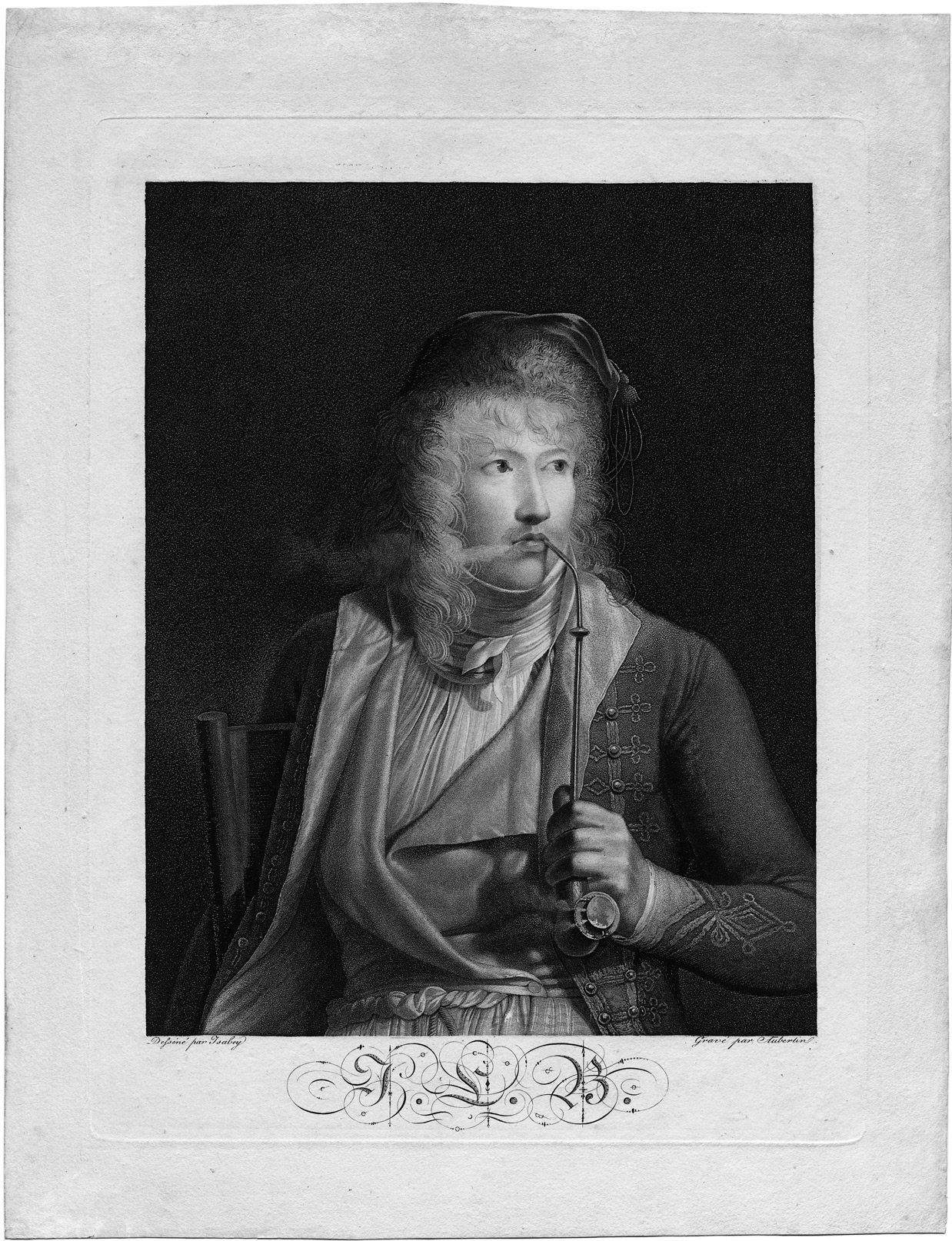Loading the page ...
François Aubertin
(1773 Metz – 1821 Ghent)
Le Fumeur (The Smoker). Etching, aquatint and stipple engraving after Jean-Baptiste Isabey. 32.2 x 24.6 cm. Circa 1804. Le Blanc 7; Courboin 1924, 911; Inventaire du Fonds Français, après 1800, 1, 204.
François Aubertin, the author of this strangely compelling portrait of his fellow painter Jacques-Luc Barbier, joined the volunteer battalion of General Marceau at an early age and was subsequently taken into German captivity at Mainz in 1795. Up until the Treaty of Lunéville in 1801, Aubertin worked as a printer and engraver in Dresden, Leipzig and Berlin, where he experimented successfully with the aquatint printing technique, which was still relatively unknown in Germany at the time. After his return to France he earned his living as a reproductive engraver in Paris. Later stages of his career took him to Metz, Brussels and Ghent, where he died in 1821, either as a result of alcohol abuse or suicide.
This portrait of the painter Jacques-Luc Barbier (1769 Nîmes – 1860 Passy) owes its appeal to the technical finesse of the execution and the exotic iconography. The biography of the sitter was equally colourful and eventful. A painter of portraits and historical scenes, Barbier was a pupil of Jacques-Louis David. With the backing of Louis XVI he was sent to America to paint a portrait of George Washington. Not long afterwards Barbier declared himself an ardent supporter of the French Revolution, serving as a professional soldier in a hussar regiment. On David’s recommendation he was appointed art commissioner and sent to Flanders to confiscate artworks for the Louvre. Round about 1797 Barbier resumed his work as a painter and took part successfully in the exhibitions of the Paris Salon. His marriage to the English singer and diva Mademoiselle Walbonne, who at that time was the star attraction of the Théatre Italien, enhanced Barbier’s social prestige and made him a familiar figure in Parisian society (see exhibition catalogue Regency to Empire. French Printmaking 1715–1814, edited by V. I. Carlson and J. W. Ittmann, Baltimore-Boston-Minneapolis, 1985, no. 119, pp. 326–328).
Aubertin’s etching reproduces a portrait drawing by Isabey in reverse. Barbier, who on account of his strikingly attractive appearance was much in demand as a model and had sat for such painters as Ingres, Isabey and Gérard, is portrayed in an extravagant, foppish costume. The flat cap with tassel, the jacket with ornamental knitted patterns and the long pipe are vaguely reminiscent of the costume of the Albanian Souliot warriors in the Greek War of Liberation, while Barbier’s elaborate oreilles de chien hair style, his pleated shirt, cravat and waistcoat are in keeping with the high fashion dictates of the Parisian Directoire. Aubertin’s sophisticated stippling technique and a highly differentiated application of the aquatint grain prove effective means of rendering complexion, hair and the texture of the fabrics convincingly and inventively. The smooth skin of the almost feminine face with its large, expressive eyes is framed with delicate ringlets. The finest stippling is used for shading and to hint at a wispy moustache. Wonderfully suggestive is the fleeting, gossamer- like smoke which escapes from the pipe and the sensuous lips of this Parisian socialite.
A very fine impression, printing with great clarity and contrast, Minor rubbing and traces of ageing in the margins, occasional remains of old hinges on the verso, otherwise in very good condition.
Contact us for further information